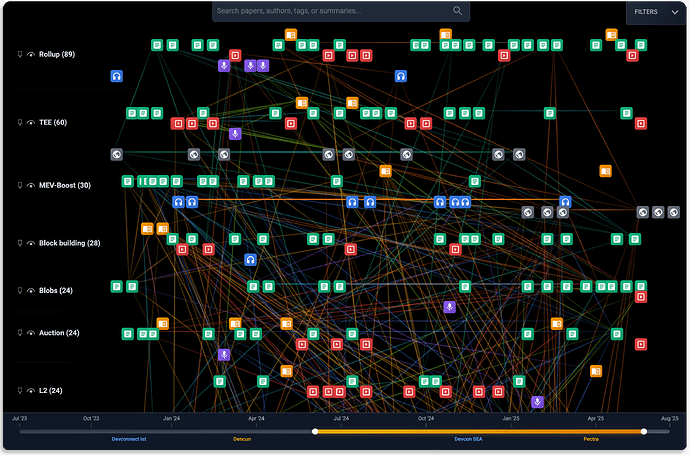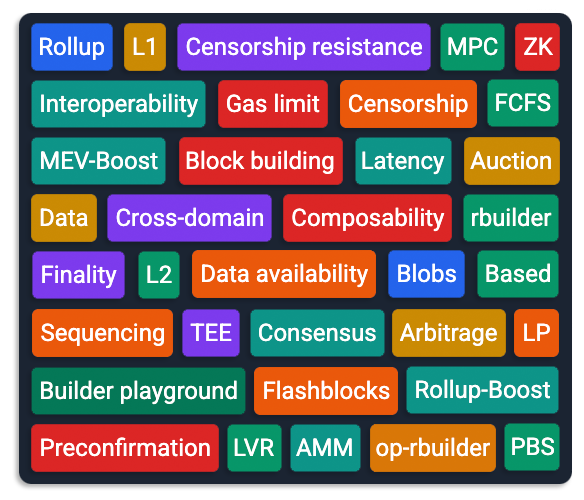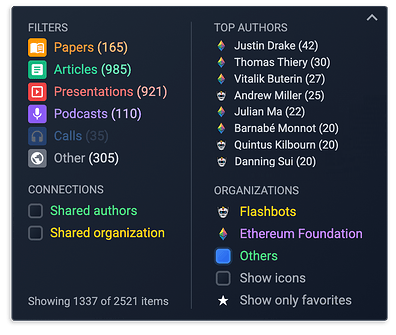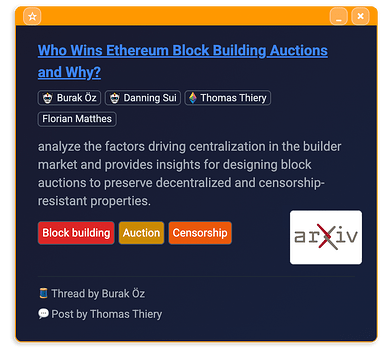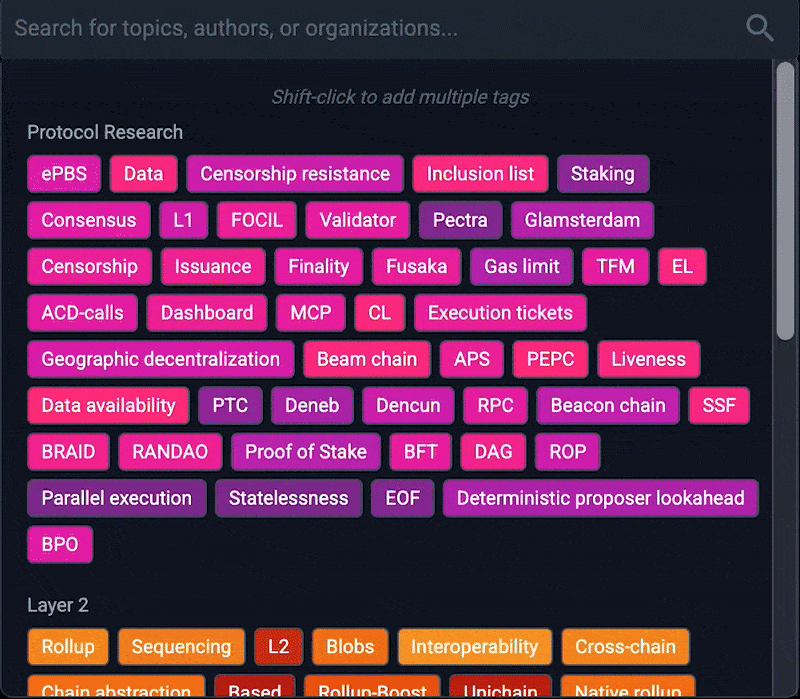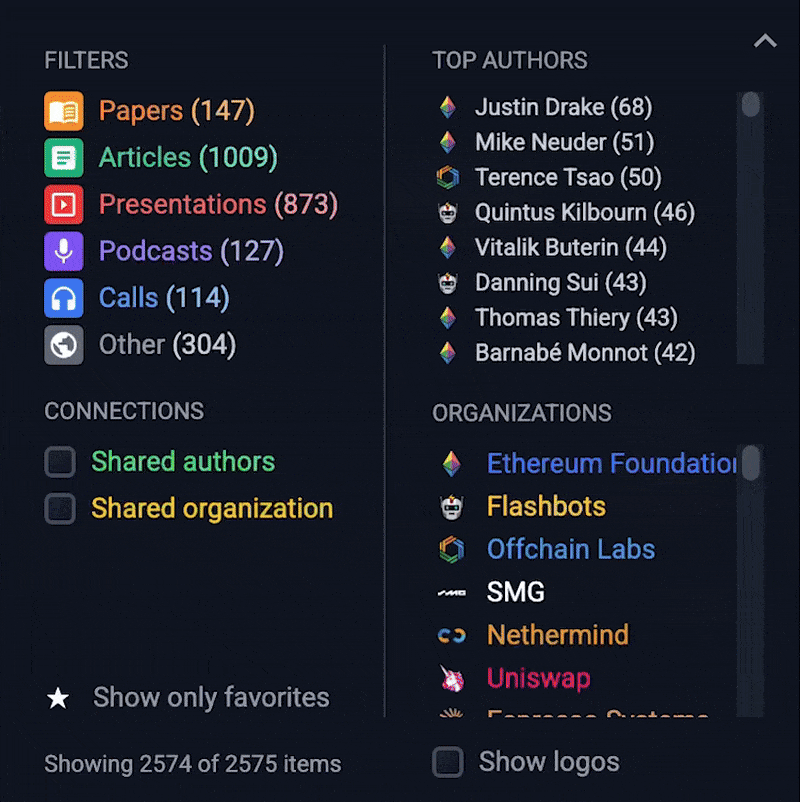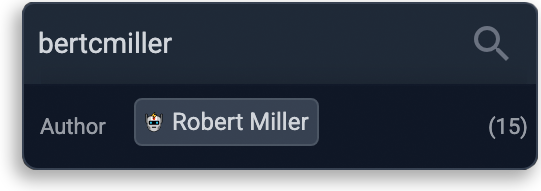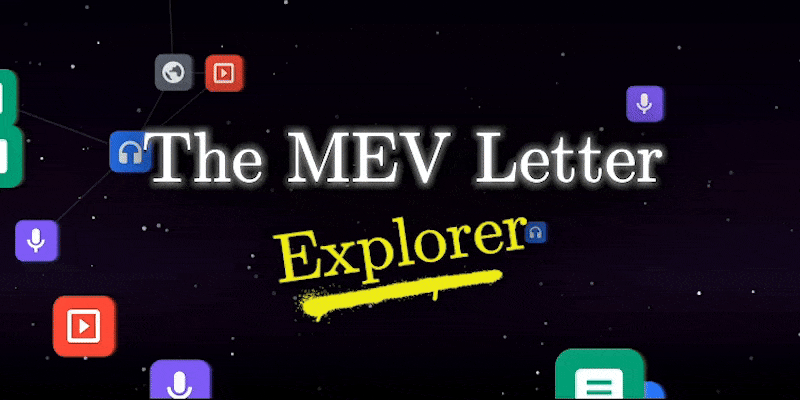
Please note that this project is under rapid development and will be improved continuously.
The MEV Letter has over the past two years summarized thousands of publications from across the MEV ecosystem. It has grown to become an important weekly resource for anyone who wants to stay up to date and read the latest and most important developments.
However, given the speed of our industry and the sheer volume of content produced, the current newsletter format is running into limitations. With each new edition published, the content of the previous editions starts to fade into the ether…
Historical editions are tedious to crawl through, important research is at risk of being lost, and contextualizing the connections between research is increasingly difficult. Readers find themselves scrolling through dozens of letters to recover a link or argument they vaguely remember.
Until today, there’s been no straightforward way to trace how research highlighted in The MEV Letter evolves, or how trends, themes, and contributors change over time.
To address these problems, I’ve over the past few months built out an interactive explorer. Launching together with The MEV Letter #100, the explorer, aptly named The MEV Letter Explorer, transforms the entire archive of letters into an interactive interface:
The explorer enables you to browse, query, and surface content across all editions in ways that were previously impossible. It contextualizes developments, identify research patterns, and connects the dots in ways that a static newsletter is never able to do.
In this post, I’ll detail how The MEV Letter Explorer works and some of its use cases. ![]()
 Categorizing and sorting the content
Categorizing and sorting the content
At launch, the explorer has just over 2500 nodes, each corresponding to a single item in The MEV Letter archive. These nodes are categorized on the y-axis based on topic (e.g., “TEE”, “Rollup”, “Censorship”), and sorted chronologically on the x-axis.
Topics are sorted in descending order based on the number of nodes within them. You can ![]() pin topics that are of interest to you at the top, and give them priority over the default sort.
pin topics that are of interest to you at the top, and give them priority over the default sort.
 Exploring specific parts in history via the timeline
Exploring specific parts in history via the timeline
The timeline, located at the bottom of the page, lets you focus on any specific period since the newsletter started in July 2023. Click and drag the timeline to pan, or adjust the edges to zoom in and out. With the timeline, you can easily surface the most active topics in a given interval and track how conversations have evolved over time.
Filtering the viewport
Given the size of the database, the explorer needs a robust system for filtering through the content. In the top right corner, you’ll find ways to filter nodes based on their content type (Papers, Articles, Presentations, etc.), organizations, and authors. You’re also able to highlight shared attributes between content by toggling “Shared author” or “Shared organization”.
 Clicking a node
Clicking a node
Alright, after you’ve pinned some topics of interest, adjusted the timeline, and filtered the content to your liking, it’s now time to see what the nodes actually look like!
When you click a node a window will show up with relevant information like Title, Author(s), a concise Summary, and Links to related resources such as threads, repositories, and slides. Clicking the hyperlinked-title will, as you might’ve guessed, open a new tab with the source content.
These windows can be moved around in the viewport to enable you to continue your exploration. You can click the minimize icon in the top right corner to transform the window into a tab.
In the top left corner of the window, you’ll find a ☆-icon, clicking this will add the nodes to your personal favorites, making the content easier to find directly from the viewport. Favorites are consistent across sessions and will show up when you launch the explorer at a later time.
 Searching
Searching
At the top of the explorer, you’ll find the search bar. Start searching to see a list of search results, or simply click any of the Tags or Authors to add them to the search bar.
The explorer supports multi-queries with AND/OR logic, enabling you to find content that contains a combination of topics, authors, and organizations in a single request. You can use shift-click to add multiple search terms.
When searching for multiple terms, an OR-separator will automatically spawn and the viewport will show the union of the search terms. If you wish to see the intersection of the search terms, simply click the separator to change it to AND.
![]()
Please note that the only data source is The MEV Letter. Search results for e.g. authors will therefore only show content included in any of the letters so far.
The system is designed to be extensible, with support for additional data sources in future releases. Please reach out if you wish to collaborate and contribute data!
 Transposing search terms into rows
Transposing search terms into rows
As you begin a search, you’ll see a funny-looking arrow appear on the left side of the search bar. Clicking this arrow will change how results are arranged. Instead of filtering the nodes within your current view, the search query will be transposed, and shown as rows.
When transposing search terms, the rows show all content connected to the search term. This is an important distinction from the standard view, where the nodes are categorized under their dominant tag. Simply put, transposed rows show the complete view of content connected to that Topic, Author, or Organization.
You will see lines between duplicated nodes to easily visualize this phenomenon. This mode is particularly useful for visualizing collaborations, shared authorship, and multi-topic intersections:
 Ephemeral chat
Ephemeral chat
Together with The MEV Letter Explorer, we’re also experimenting with an new chat, enabling you to interact with your fellow MEV historians as you explore content.
You’ll find a chat-shortcut in the top right corner of the forum, to the left of your avatar. Messages in the chat vanish after a week, so if you have feedback on the explorer please leave a reply in this thread.
While the explorer is available for anyone to use, the chat is limited to logged-in users on the forum.
If you haven’t yet, sign up and join the conversation!
If you’ve found value in The MEV Letter over the past two years, I hope this new tool will extend that experience and give you new ways to engage with the research.
The explorer will get continuous updates to make it more powerful and easy to use. The number of nodes will also grow as new letters are published, and/or new data sources are added.
Feedback on how things can be improved is much appreciated. What kinds of queries do you want to run? What other data sources would you like to see integrated? How can the UX be improved further?
Leave a comment with your ideas below, and let me know what you think!
